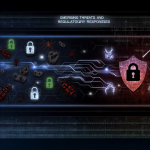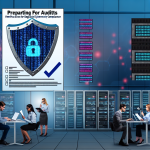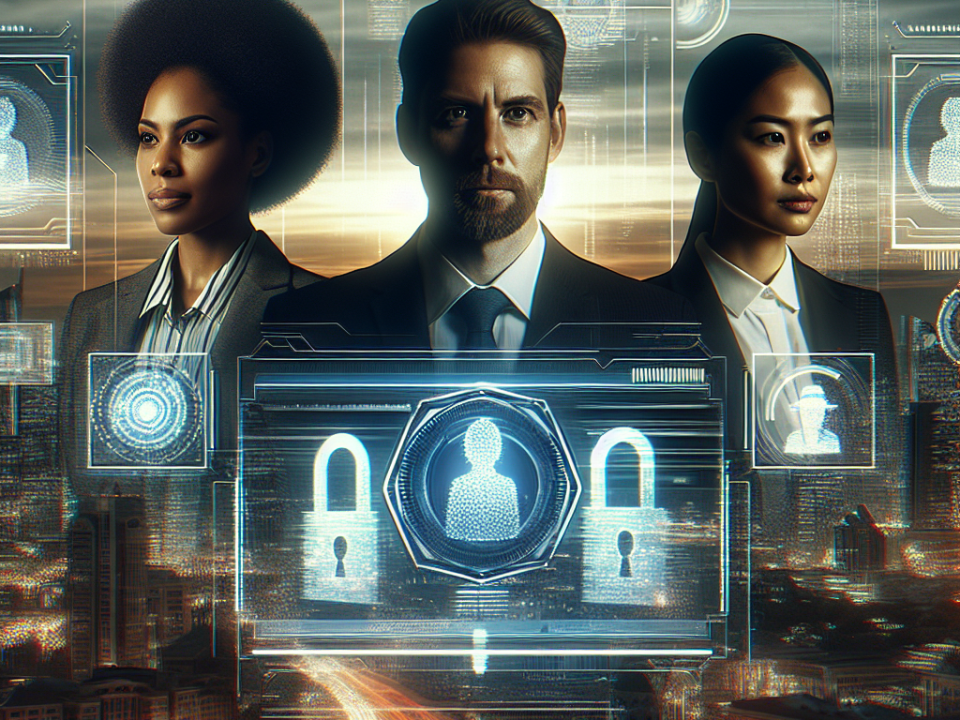
Emerging Threats and Regulatory Responses: A Cybersecurity Overview
August 9, 2025
Preparing for Audits: Best Practices for Regulatory Cybersecurity Compliance
August 10, 2025
In an era where digital transformation is the norm, businesses of all sizes face an unprecedented array of cybersecurity threats. As cyberattacks continue to evolve in sophistication and frequency, the need for effective leadership in cybersecurity has become increasingly critical. One innovative solution that has emerged in recent years is the virtual Chief Information Security Officer (vCISO). This article delves into the vCISO trend, exploring its significance, benefits, and future within the cybersecurity landscape.
Understanding the vCISO Role
A vCISO serves as an external expert who provides strategic cybersecurity leadership and governance to an organization, functioning similarly to a traditional Chief Information Security Officer but on a part-time or contract basis. This model allows organizations, particularly small to medium-sized enterprises (SMEs) and those without the budget for a full-time C-suite executive, to benefit from high-level expertise without the overhead costs associated with permanent positions.
The Rise of the vCISO Trend
The growing demand for vCISO services can be attributed to several factors:
1. Talent Shortage in Cybersecurity
The cybersecurity sector faces a persistent skills gap, with millions of positions unfilled worldwide. Many organizations struggle to find and retain top talent, making the vCISO model an attractive alternative. By leveraging external experts, businesses can access the necessary skills and experience to navigate complex security landscapes.
2. Cost-Effectiveness
Hiring a full-time CISO can be prohibitively expensive, especially for smaller organizations. The vCISO model offers a more budget-friendly solution, allowing companies to allocate funds strategically while still receiving high-level security oversight.
3. Flexible Engagement
Organizations can tailor their engagement with a vCISO to suit their specific needs, whether that means part-time hours, project-based work, or ongoing advisory services. This flexibility is particularly beneficial for companies that may not require full-time security leadership.
4. Access to Diverse Expertise
vCISOs often bring diverse experiences and perspectives from various industries, enabling them to provide insights that are not only strategic but also pragmatic. Their exposure to multiple security frameworks and regulatory environments can enhance an organization’s security posture.
Key Responsibilities of a vCISO
While the specifics of the role can vary based on organizational needs, common responsibilities include:
- Strategic Security Planning: Formulating comprehensive cybersecurity strategies aligned with business objectives.
- Risk Assessment: Evaluating the organization’s risk landscape and recommending appropriate security measures.
- Policy Development: Crafting and implementing security policies and procedures.
- Compliance Management: Ensuring adherence to industry regulations and standards such as GDPR, HIPAA, or PCI-DSS.
- Incident Response Preparedness: Developing and refining incident response plans to minimize damage in the event of a breach.
- Staff Training: Providing training and awareness programs to bolster the organization’s overall security culture.
The Future Landscape
As organizations continue to navigate a rapidly changing technological environment, the demand for cybersecurity expertise is likely to grow. The vCISO trend is set to become a staple in many companies for several reasons:
1. Increased Regulatory Scrutiny
As governments and regulatory bodies enact stricter cybersecurity regulations, the need for dedicated leadership to ensure compliance will be paramount. vCISOs can assist organizations in navigating these complexities.
2. Continued Evolution of Cyber Threats
Cyber threats will only become more sophisticated. Organizations will require adaptive strategies, and vCISOs can provide the nimbleness needed to respond effectively to emerging risks.
3. Integration with Business Strategy
Cybersecurity is becoming increasingly recognized as a cornerstone of business strategy. The vCISO model allows organizations to integrate cybersecurity considerations into their overall strategic planning, ensuring resilience and sustainability.
4. Growth of Remote Work Models
The shift toward remote and hybrid work environments has introduced new vulnerabilities. vCISOs can help organizations develop robust security frameworks that secure remote operations and facilitate digital collaboration without compromising security.
Conclusion
The vCISO trend reflects a significant shift in how organizations approach cybersecurity leadership. As businesses face an ever-evolving threat landscape, the flexibility and expertise offered by vCISOs will become an essential component in securing their digital infrastructures. By leveraging the advantages of this model, organizations can enhance their cybersecurity posture, protect sensitive data, and ensure compliance, all while remaining agile in a fast-paced digital world. Ultimately, vCISOs not only represent a solution to the current talent crisis but also embody the future of strategic cybersecurity leadership.







